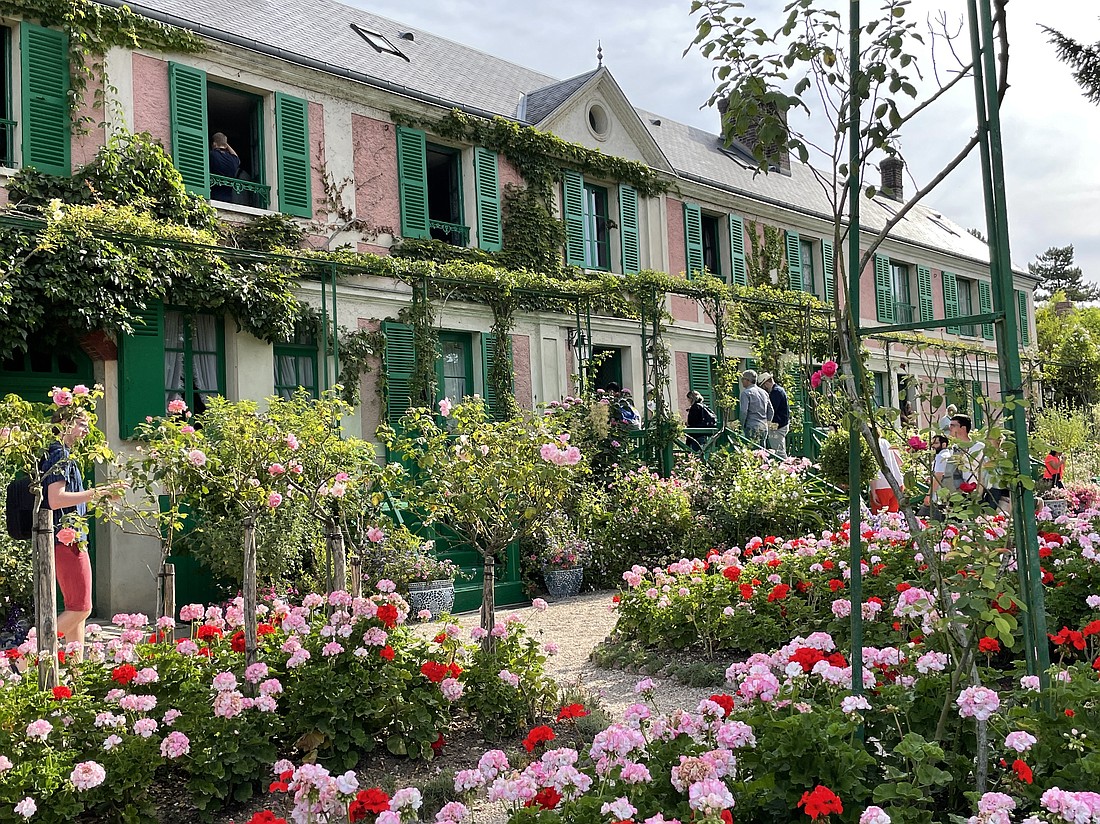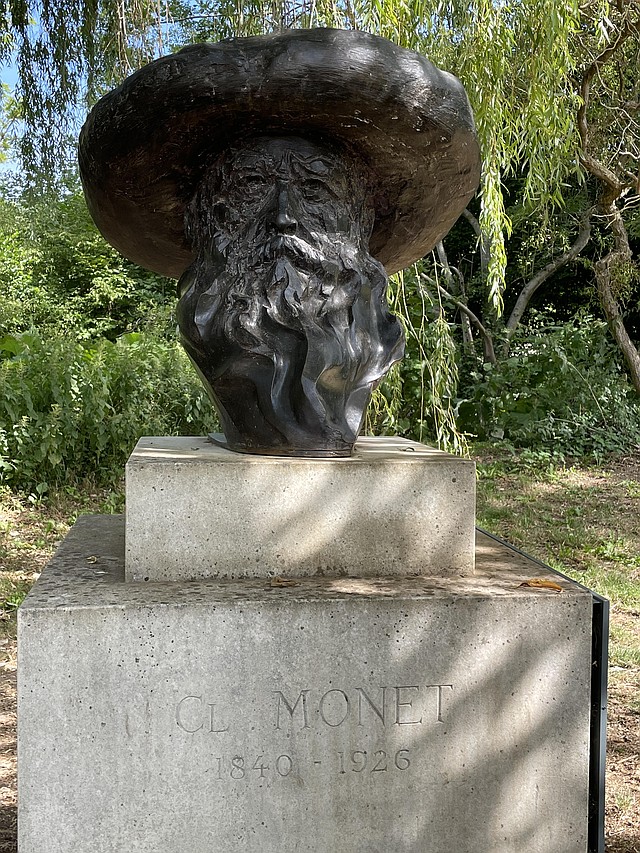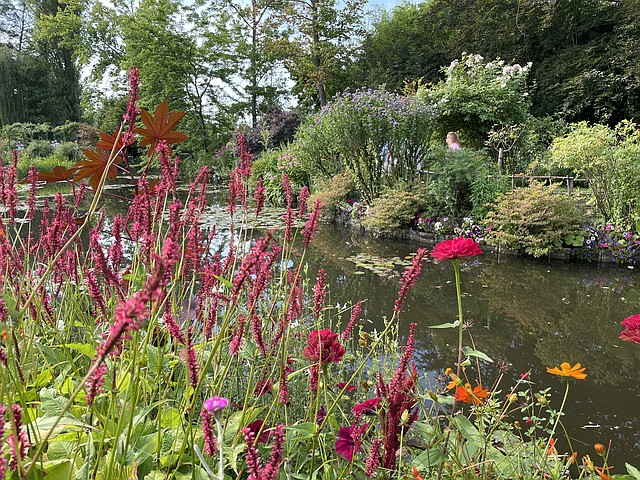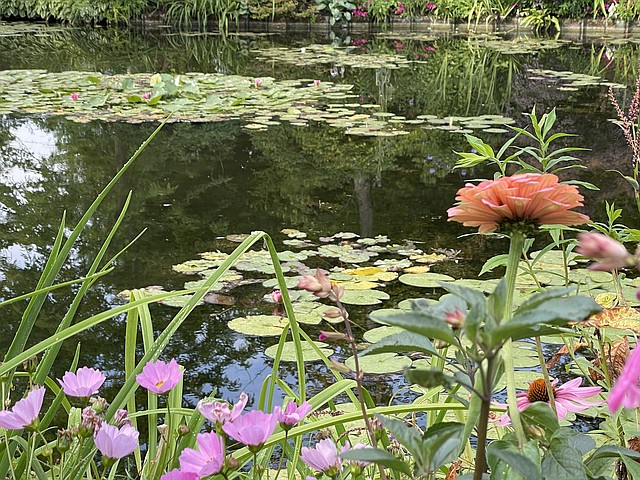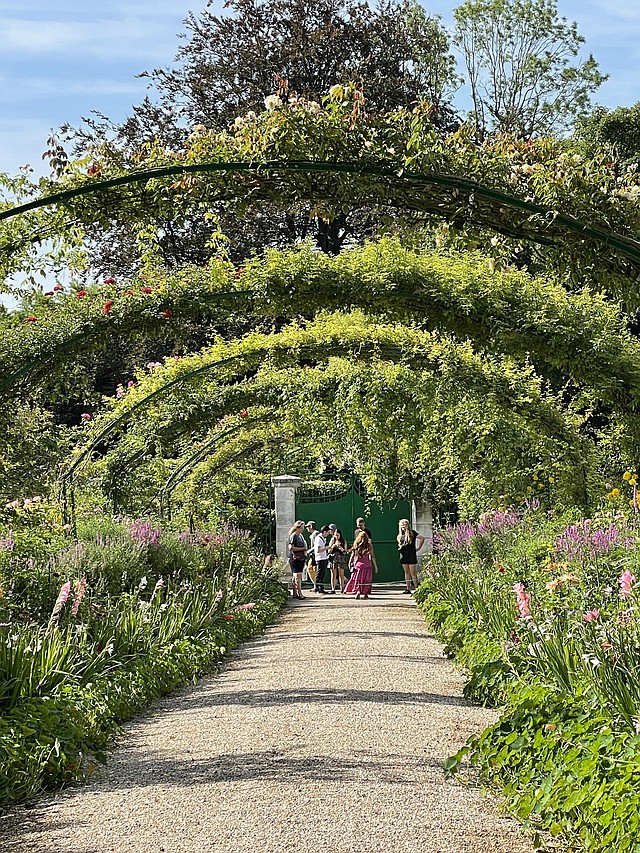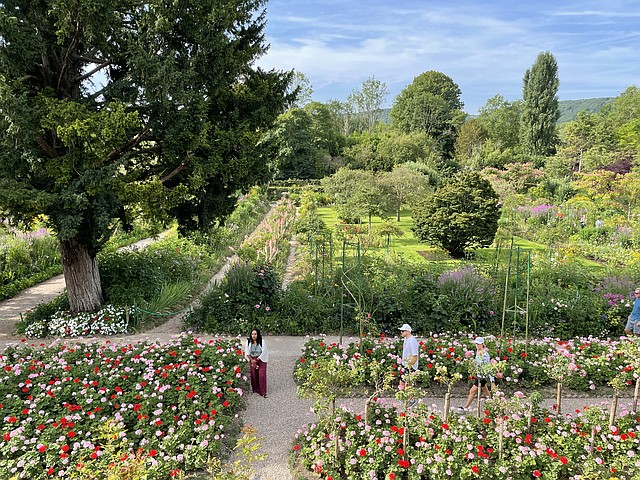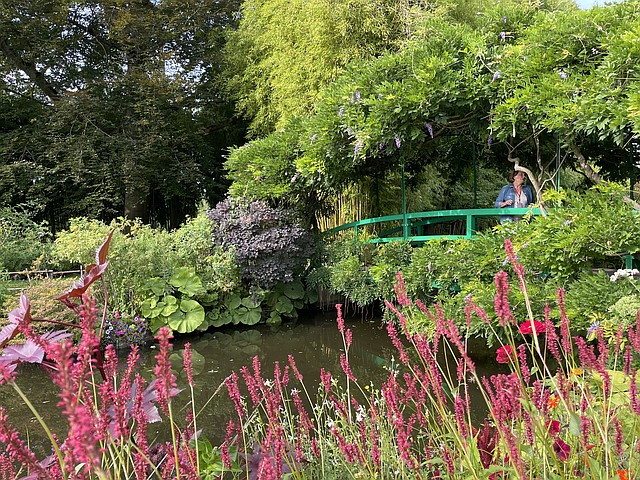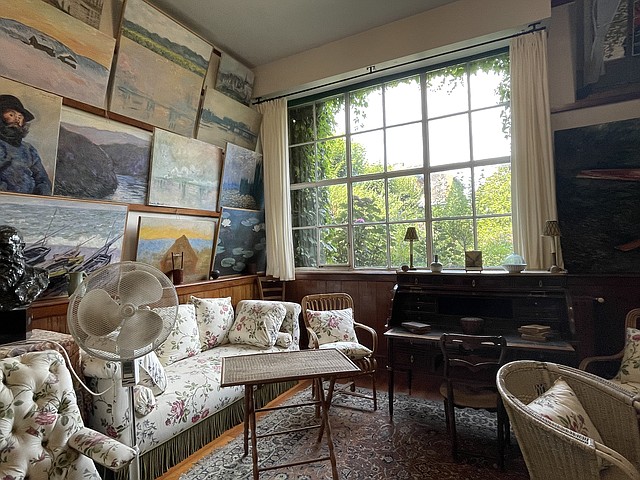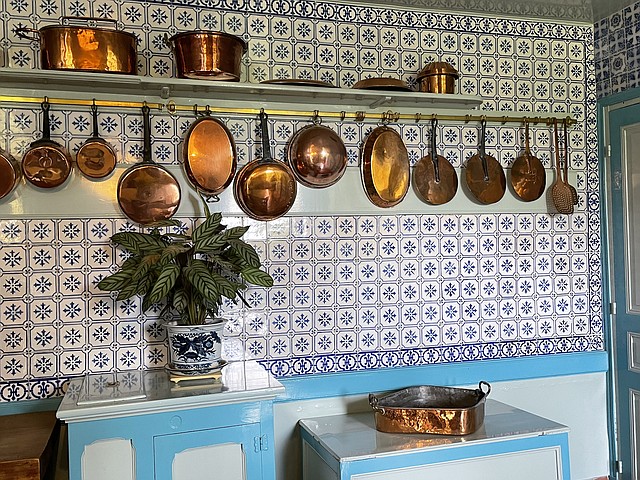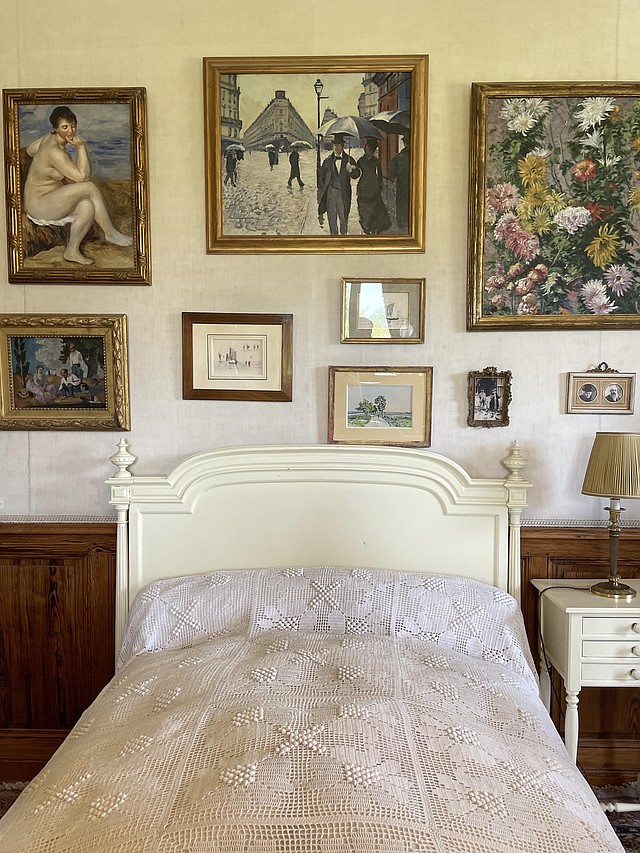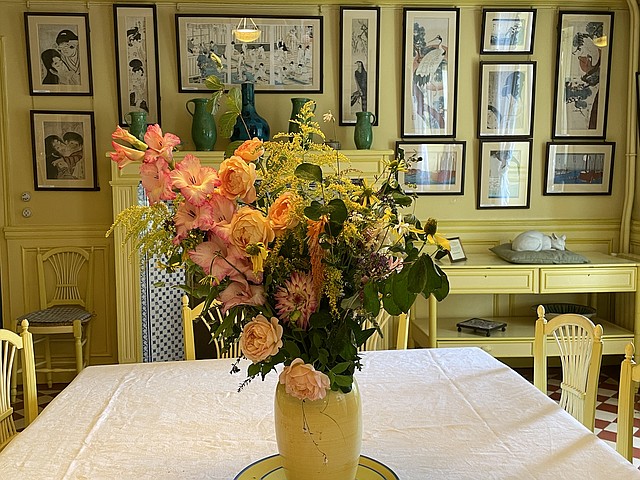It wasn’t enough for me to stare in awe and drink in the beauty of Claude Monet’s ravishing paintings of water lilies in Paris’ wonderful Musee de l’Orangerie - which by the way, is a must visit attraction for art lovers in the City of Lights. I needed to make the trip to Giverny, where the renowned Impressionist had lived and worked, and created over 250 paintings of said water lilies in his garden.
Widely regarded as the poster boy for Impressionism, Monet strived to capture the sensory elements of a scene, using loose brushwork and a lighter palette. He, as did his contemporaries, aimed to capture the effects of light at different times of day, often painting outside in “plein air.”
Monet left the urban hustle- bustle of Paris in 1883 and moved to rural Giverny, located a little over an hour from the capital city. There, in the French-Norman countryside, he constructed an exquisite Japanese inspired water garden. The centerpiece is a man-made, water lily-covered pond, surrounded by flowers and adorned with a Japanese bridge. This sublime setting became a major inspiration for the artist.
In Giverny, you’ll discover Monet’s Garden actually has two distinct parts that contrast and complement one another: a lush flower garden called Clos Normand in front of the house and the above noted Japanese paradise on the other side of the road.
The Clos Normand is all about colors and textures. It’s divided into beds with groups of flowers of different heights for volume. Monet liked to mix simple flowers like daises and poppies with rare varieties. There are fruit trees and ornamental trees, long stemmed hollyhocks and multi-hued annuals. The central path is covered by iron arches on which climbing roses grow. Other rose bushes cover the railings on the property.
It's obvious that Monet was not a fan of organized gardens, as the flowers are left to grow freely and uncontained. This Edenesque landscape is a veritable feast for the senses and oh, the sweet fragrances!
The water garden was inspired by the Japanese gardens that Monet knew from the many prints he collected on this subject. You’ll find the iconic green Japanese bridge, along with other smaller bridges, weeping willows, wisterias, the famed water lilies and a bamboo forest. Monet was very proud of this garden and spent hours contemplating it. He also enjoyed receiving his guests there. It’s truly an enchanting place and easy to see how it captivated the artist.
Monet lived in his home at Giverny from 1883 to 1926 and made it his own, enlarging it with the addition of two wings. He chose all the colors in the house. He also designed a large kitchen for his family of ten plus all the frequent guests that he hosted and created his first studio in the barn next to the house, with an apartment above, where he could work and sleep.Over the kitchen, Monet’s four stepdaughters had their bedrooms, while his two sons and two stepsons slept in the attic.
The self-guided tour of the house begins in the blue sitting room, where the dominant color is – you guessed it – blue! Japanese woodblocks collected by the artist are featured. He owned 231 of them and used them as inspiration in his own work.
Nearby is the pantry where food was stored. Note the two boxes hanging on the wall. They were used to store eggs, which were from the hens in the chicken yard. And if you wonder how popular eggs were in the Monet household, know that these boxes could store over 100 eggs at a time. I was curious about the buffet, as it had keys on each of the drawers. When I inquired, the docent told me that food was expensive and thus locked down.The studio, which later became Monet’s smoking room, was also where the artist welcomed his visitors and business associates. On the walls are reproductions of the painter’s works, though back then, they were the real thing. Check out the bust of the artist by Paul Paulin, which is testament to the fact that Monet became famous during his lifetime, unlike many other noted artists who achieved recognition posthumously.
Take the staircase from the pantry to the upper floor, where you’ll find Monet’s bedroom. The simple bed was his and it’s where he died on December 5, 1926, at the age of 86. There are breathtaking views of the garden from the windows and paintings by artists of Giverny and reproductions of work by some of Monet’s friends hang on the walls.Monet’s wife Alice had her own bedroom, as was typical in the middle upper class of the time. It’s also decorated with Japanese woodblocks featuring female characters.
My favorite room of the house is the dining room. I loved the yellow toned paint colors and the furniture, also painted yellow. In the cabinets are sets of blue earthenware crockery.In the kitchen, blue Rouen tiles decorate the walls, copper pots gleam and a large coal and wood stove occupies a prominent spot in the room. Everything seems to be waiting for the artist and his family to return.
Debbie Stone is an established travel writer and columnist, who crosses the globe in search of unique destinations and experiences to share with her readers and listeners. She’s an avid explorer who welcomes new opportunities to increase awareness and enthusiasm for places, culture, food, history, nature, outdoor adventure, wellness and more. Her travels have taken her to nearly 100 countries spanning all seven continents, and her stories appear in numerous print and digital publications.
